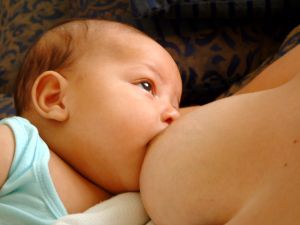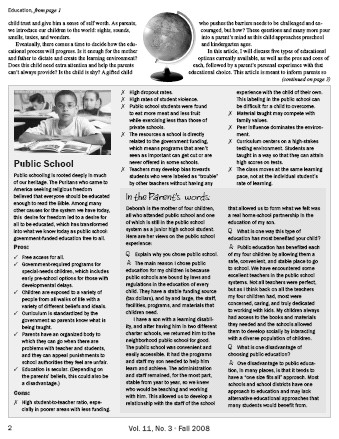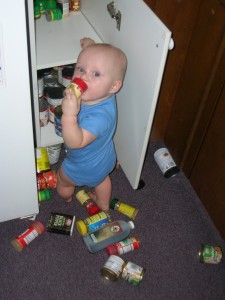By Deborah Bershatsky, PhD, AP mother
 “We’ll put her on modified demand feeding,” the pediatrician said confidently at Rachel’s one week visit.
“We’ll put her on modified demand feeding,” the pediatrician said confidently at Rachel’s one week visit.
I was eager to be a good mother and terrified I wouldn’t know how. I gave the doctor my worried attention. Modified demand feeding, it turned out, meant that I would nurse Rachel when she asked for it while gently nudging her into feeding every three to four hours. Also, I would eliminate nighttime feedings quickly. Babies, I learned, must be taught to sleep through the night as soon as possible, so that the whole family can sleep.
Rachel was an unusually placid and easygoing infant. She enjoyed nursing and easily waited three hours between feedings. At seven weeks old, she was moved from the bassinet in our room to the crib in her own room and had given up nighttime feedings almost entirely. A few weeks later, she slept soundly all night. My friends were green with envy. No one could believe I had such a wonderful baby. I settled into the smug feeling that I must be doing something right.
Rachel nursed exclusively until she was six months old, when the doctor recommended that she be started on solids. By eight months, she was eating well and was down to nursing four times a day. She did this for two more months, and then during the 11th month, I slowly weaned her completely. I had aimed to wean her between nine months and a year, and she had cooperated perfectly!
The Fussy Baby
I cannot adequately describe my shock and horror some years later when Ezra came, protesting vociferously, into the world. He did not think much of modified demand feeding, but he liked the demand part all right. He had to nurse every hour or so, with no regard to the time of day or night. Furthermore, he would only fall asleep in my arms, and if I got up or put him in the cradle, he would awaken instantly and cry. He had long fussy periods which began at about 10 p.m. and lasted until 3 or 4 a.m. During this time, he would be comforted only briefly by frequent nursing.
Our family was in an uproar, and I was nearly crazy from lack of sleep. While I was well aware of the popular “cry it out” method of solving this problem, I could not bear to listen to my little one’s screams without comforting him.
We began what later came to be known as a “game of musical beds.” I would take Ezra into the sofa bed in the living room to nurse him and hold him as he cried, occasionally phoning my one insomniac friend for support. I would doze on and off all night, and then finally we would both collapse and sleep solidly for two hours between 4 and 6 a.m. When my back began hurting from the sofa bed mattress, I took Ezra into our bed and Charles, my husband, went to sleep in the sofa bed. When his back gave out, he went to Rachel’s bed and Rachel slept in the living room. Days turned into weeks, and I grew desperate. Ezra kept nursing and crying and not sleeping, and I really felt I was beginning to lose it.
One night, Charles came into whatever room Ezra and I were in and said he wanted me back in bed with him, and if Ezra had to come with me and cry all night, so be it. During the months that followed, things settled down somewhat. Two hours of sleep turned into a tolerable three or four, modified demand feeding had become a dirty word, and Charles and I had a baby in our bed.
A Change in Parenting Style
What now? My pediatrician certainly would not approve of this. In desperation, I started reading everything I could find on the subjects of breastfeeding and calming crying babies. In the process, I made a fascinating discovery: I was not alone. There were women everywhere nursing truly on demand and sleeping with their babies. In fact, there existed a whole network of mutually supportive mothers and fathers striving to raise their children according to what their instincts told them, rejecting current social taboos.
Their philosophy included encouraging unrestricted breastfeeding, child-led weaning, cosleeping, and helping parents to accept a more modest lifestyle in favor of the privilege of spending time at home with their young children. They believed that to raise healthy, independent children, we must meet all of their dependency needs early in life and allow them to mature at their own pace.
It is interesting to realize that with the exception of Western Society, this is the way it has always been. With the Industrial Revolution came the ability to heat a large home and secure it against intruders. This made it possible to put babies off into separate quarters, as breastfeeding began to be replaced by the more scientific method of artificial feeding. The new emphasis on science led to the use of modern inventions in caring for babies – cribs, clocks, bottles, pacifiers – all of which widened the separation of mother and baby.
The germ theory of disease and the discovery that sexuality existed in children also contributed to the “hands off” method of childrearing, which peaked in the 1940s. Mothers were sternly warned of serious emotional harm. Even kissing, hugging, and snuggling were regarded as dangerous, dependency-promoting behaviors. Babies’ cries were not to be responded to, as this would lead to manipulation of the mother by the baby. Feeding was to be by the clock and never on demand.
Since then, science has proven the superiority of human milk over formula, and many benefits of breastfeeding have been documented: Immunological release of the hormones oxytocin and prolactin, which elicit mothering behaviors. Also, the importance of mother-infant bonding through breastfeeding and skin-to-skin contact, beginning immediately following birth, has been demonstrated – as has the need for holding, cuddling, and responding promptly to babies’ cries as they grow.
Current childrearing practices are now coming into question, and books advocating extended breastfeeding and co-sleeping are increasing in number. It appears that the tide has turned. The new wave in parenting today is to return to the old ways.
A New Confidence Born
How relieved I felt when I allowed myself to resonate with these ideas and reclaim my instincts! I experienced the ancient yearnings that had existed within my own mother’s heart, even during Rachel’s infancy, to be physically close to my baby as much as he and I desired it. Instead of the superficial feeling of competence I had with Rachel, I now had a deep sense of fulfillment and a feeling of rightness and peace.
By the time Ezra was six months old, we were all good at sleeping – and together. Rachel had joined us, in an effort to make up for lost time. She was, however, an acrobatic sleeper and hated to awaken in the night with the baby, so she returned to her own bed a few months later. She is still a welcome guest in our bed.
Ezra fed every two to three hours during the night, but I had learned the technique of nursing lying down so that I had only to roll over, let him nurse, and drift back to sleep with him. Our sleep cycles synchronized so that I would awaken just moments before he did. It wasn’t long until I felt refreshed in the mornings, although my sleep never went uninterrupted.
It was not without anxiety that I embarked on this journey with my family. There was no precedent for it in either my or Charles’ upbringing. There were warnings from many that this was a dangerous course: The baby would never leave our bed, he would be too attached to me, our sex life would be ruined. Armed with information and support that these things do not happen – rather, that children do want to sleep in their own bed eventually, that they grow up less dependent when parented this way, and that with a little bit of creativity, sex can be better than ever – we forged ahead.
From my perspective, things have turned out fine.
Science has proven the superiority of human milk over formula, and many benefits of breastfeeding have been documented.
 I appreciate the effort of the Growing Child issue (The Journal of API, Fall 2008) to focus on the education of our older API-parented children. However, I feel that there was negative bias against public school. The photo selected to represent public school in the article showed unhappy children sitting at their desks without an adult in sight, whereas the other photos for other schooling options showed happy people interacting with each other or actively engaged in work.
I appreciate the effort of the Growing Child issue (The Journal of API, Fall 2008) to focus on the education of our older API-parented children. However, I feel that there was negative bias against public school. The photo selected to represent public school in the article showed unhappy children sitting at their desks without an adult in sight, whereas the other photos for other schooling options showed happy people interacting with each other or actively engaged in work.






